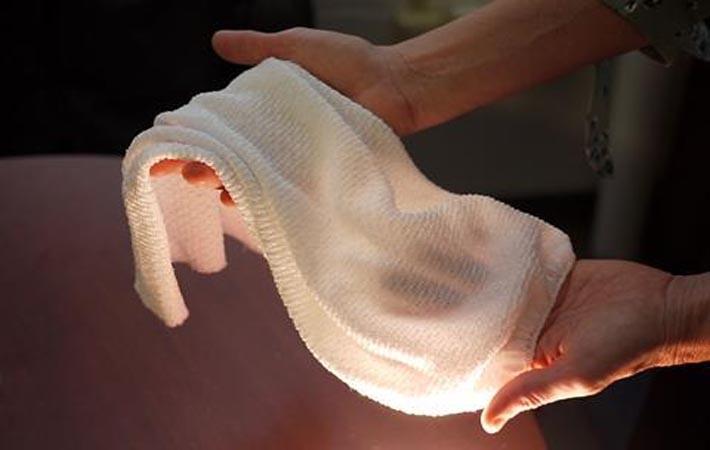University of Maryland (UMD) researchers have created a fabric that can automatically regulate the amount of heat that passes through it. When conditions are warm and moist, such as those near a sweating body, the fabric allows infrared radiation, i.e., heat, to pass through. When conditions turn cooler and drier, the fabric reduces the heat that escapes.
The development was reported in the February 8 issue of the journal ‘Science’.University of Maryland (UMD) researchers have created a fabric that can automatically regulate the amount of heat that passes through it. When conditions are warm and moist, such as those near a sweating body, the fabric allows infrared radiation, i.e., heat, to pass through. When conditions turn cooler and drier, the fabric reduces the heat that escapes. #
The researchers created the fabric from specially engineered yarn coated with a conductive metal. Under hot, humid conditions, the strands of yarn compact and activate the coating, which changes the way the fabric interacts with infrared radiation. They refer to the action as ‘gating’ of infrared radiation, which acts as a tunable blind to transmit or block heat.
"This is the first technology that allows us to dynamically gate infrared radiation," said YuHuang Wang, a professor of chemistry and biochemistry at UMD and one of the paper’s corresponding authors.
The base yarn for this new textile is created with fibres made of two different synthetic materials—one absorbs water and the other repels it. The strands are coated with carbon nanotubes, a special class of lightweight, carbon-based, conductive metal.
Because materials in the fibres both resist and absorb water, the fibres warp when exposed to humidity, such as that surrounding a sweating body. That distortion brings the strands of yarn closer together, which does two things.
First, it opens the pores in the fabric. This has a small cooling effect because it allows heat to escape. Second, and most importantly, it modifies the electromagnetic coupling between the carbon nanotubes in the coating.
"You can think of this coupling effect like the bending of a radio antenna to change the wavelength or frequency it resonates with," a press release from the university quoted Wang as saying.
Depending on the tuning, the fabric either blocks infrared radiation or allows it to pass through. The reaction is almost instant, so before people realize they’re getting hot, the garment could already be cooling them down. On the flip side, as a body cools down, the dynamic gating mechanism works in reverse to trap in heat.
According to the Science paper, this is first textile shown to be able to regulate heat exchange with the environment.
More work is needed before the fabric can be commercialized, but according to the researchers, materials used for the base fibre are readily available and the carbon coating can be easily added during standard dying process. (DS)
Fibre2Fashion News Desk – India
